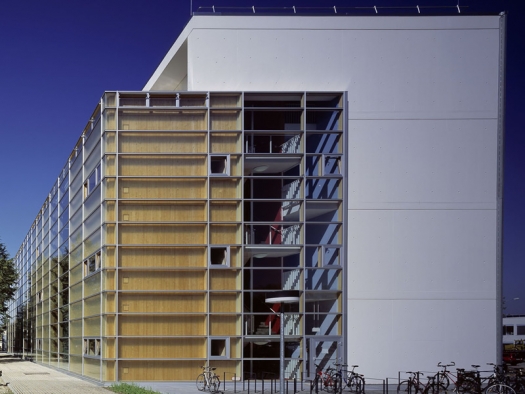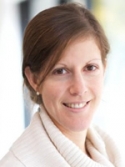UniversityComplementaryMedicineClinicFreiburgGermany.jpg

Medical Center, University of Freiburg
The Center for Complementary Medicine, part of the Medical Center of the University of Freiburg, spans an impressive range of approaches within the field of complementary medicine. Their array of offerings, listed on their website,1 is limited only by the criteria that whatever is used or investigated is scientifically promising or sound. The herbal remedy hypericum, for instance, is used at the center and is widely approved as a treatment for depression. Its efficacy is backed by numerous Cochrane reviews, making it an example of a complementary herbal therapy that has been accepted by mainstream science. One of the center’s admirable aims is to expand this growing link between conventional and complementary health through its treatment, teaching and research.
Treatment
The Center sees about 5,000 patients per year, usually with severe conditions such as arthritis, irritable bowel syndrome, asthma, cardiovascular disease, cancer, internal diseases, functional diseases or fibromyalgia, to name a few. Patients often have symptoms that are difficult to explain, or diseases that are difficult to cure.
Their clinical approach is essentially integrative; Professor Huber, the director of the center, is an internist and gastroenterologist with a physicians-board certified qualification in complementary medicine. Dr. Sabine Schulz is trained both in complementary medicine and as a general practitioner. Their combined understanding of conventional and complementary medicine, and the numerous complementary specialists who work at the center, make them a valuable bridge between two worlds. They practice a patient-centered approach that respects the individual choices of their patients, and through which they share their knowledge and experience, and also learn from their patients, in a supportive partnership for health.
Research
The Center considers its topics of research very carefully and pursues areas that appear to be promising. They do a substantial amount of investigation into phytomedicine and secondary plant metabolites, movement therapies and relaxation techniques, as well as naturopathy, acupuncture, homeopathy, and neurotherapy.
A key advantage of the Center is their practice of bench to bedside translational research. If they observe something of interest during treatment, they relay the information to their lab for investigation. Their areas of focus in this respect tend to be cancer, the immune system and the respiratory system. In a first step, they use models with human blood cells to check the effects of different herbal preparations in vitro. If something looks promising after this ‘test run,’ they go on to clinical trials with it. This close relation between clinical treatment and research effectively combines research and patient care.
Their research also expands beyond herbal remedies. They are currently conducting a large government funded study on Eurythmy therapy, a mindful movement therapy which trains not only muscle strength, but also body and spatial awareness, and whether it can reduce falls of elderly people. They further plan to investigate the therapy in terms of whether it improves anxiety, sleep and wellbeing.
In a recently completed study, they investigated whether a stay in a forest or in the fields makes a difference for quality of life and wellbeing.
Their general research aim is to take successful projects further and further in the hopes of building a strong enough evidence base for good complementary therapies to be better integrated into the mainstream. They did this recently in the case of hyperthermic baths for depression. Two studies were already successfully conducted and published,2, 3 and they are now in the process of conducting a third confirmatory study.
To achieve their research ambitions and advance science with the sole intention of providing quality evidence on complementary therapies, the Center has conducted investigator initiated trials (IIT) and would like to continue to do so. Unfortunately, regulations are becoming increasingly difficult and many bureaucratic hurdles must be passed for institutes to achieve authorization for carrying out such studies. Without a large team and significant funds, this is a difficult task. The Center is working hard to fulfill all the necessary criteria, but it seems an excessive systematic barrier that discourages, rather than encourages research that could make such a difference for human health.
Teaching
The Center is board-accredited to teach and offers two tracks:
1. A track for current medical students.
For the past 16 years complementary medicine has been a compulsory subject for medical students in Germany. The center is responsible for teaching about 340 students per year on the topics of physical therapy and naturopathy. The course is offered four times per year (twice per semester), from 9am Monday morning to Friday afternoon, and includes:
- A full week of training comprised of lectures, patient trainings and personal experiences of some therapies such as cupping, hot tea compresses, acupuncture, thermal baths
- Practice with simulation patients based on past cases in the clinic, particularly those related to functional diseases
- Seminars on the key points of complementary medicine, such as phytotherapy and its application for internal medicine, homeopathy, water therapy, movement therapy
- A final exam
2. An additional qualification track for practicing physicians.
This track runs for three hours per week over a period of two years for practicing physicians who want to gain additional qualifications in complementary medicine. It includes:
- 240 hours of lessons and 80 hours of seminars based on practical cases
- A final exam
The Center for Complementary Medicine in Freiburg embodies an inspiring combination of the science and art of health. They are rooted in the belief and practice of treating with therapies of quality evidence, and contribute to expanding that evidence base themselves. Through their teaching they pass on this knowledge and attitude to both existing and future health practitioners. At the same time, they recognize the unique humanness of each of their patients, acknowledging with a remarkable humbleness that although they have knowledge and experience to offer, individual paths need to be found for everyone. They prioritize the freedom of choice of their patients, and regardless of what those choices are, place themselves as a supportive partner in health along the way.
Endnotes
- The Center for Complementary Medicine of the Medical Center - University of Freiburg and University Complementary Medicine Clinic.
- Naumann, J., Grebe, J., Kaifel, S., Weinert, T., Sadaghiani, C., & Huber, R. (2017). Effects of hyperthermic baths on depression, sleep and heart rate variability in patients with depressive disorder: a randomized clinical pilot trial. BMC complementary and alternative medicine, 17(1), 172.
- Naumann, J., Kruza, I., Denkel, L., Kienle, G., & Huber, R. (2020). Effects and feasibility of hyperthermic baths in comparison to exercise as add-on treatment to usual care in depression: a randomised, controlled pilot study. BMC psychiatry, 20(1), 1-13.


